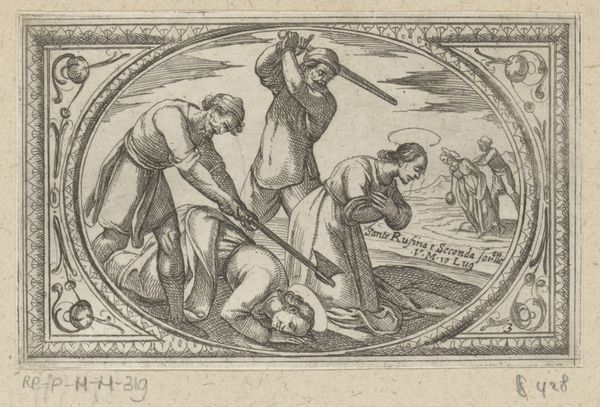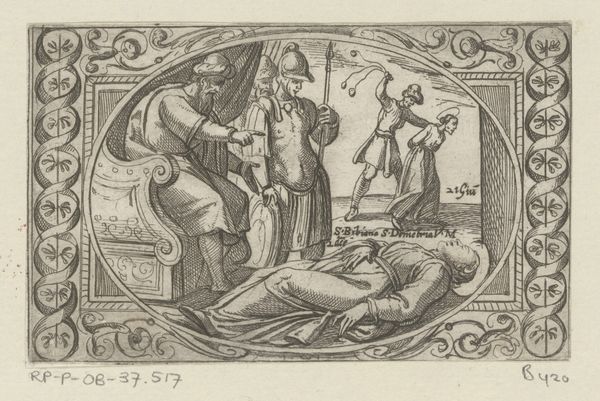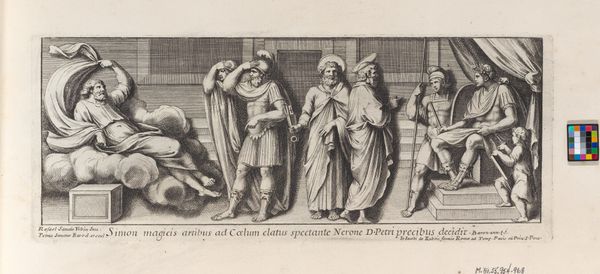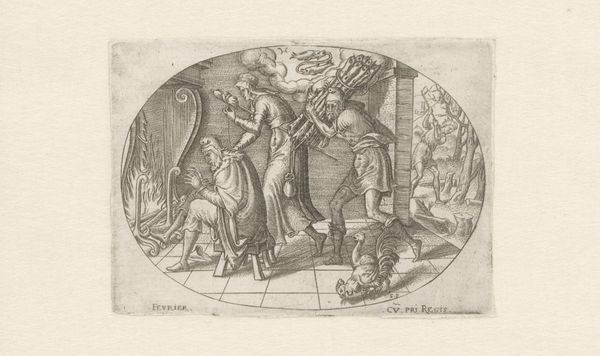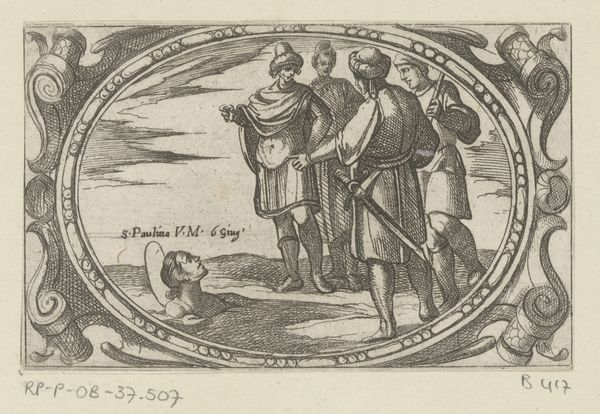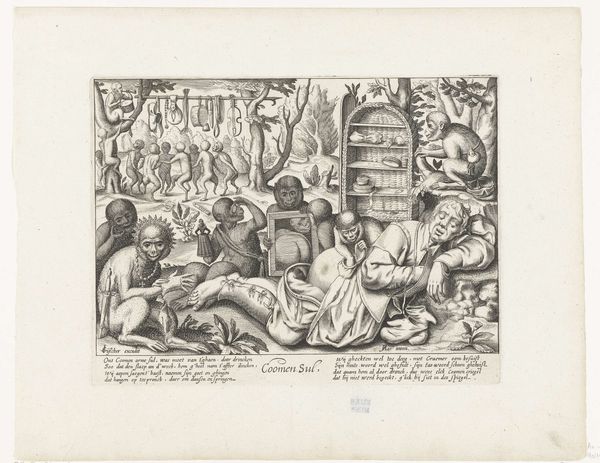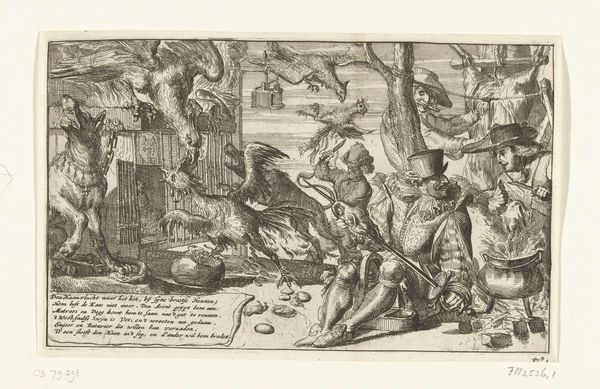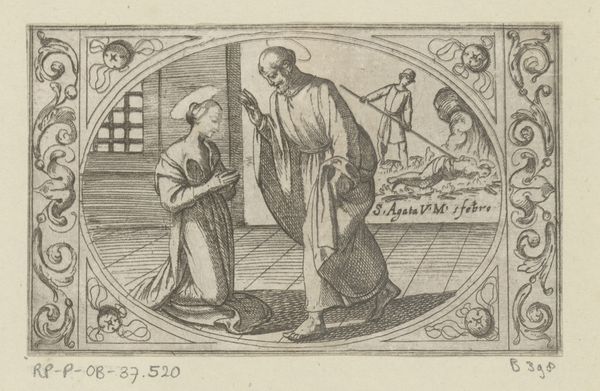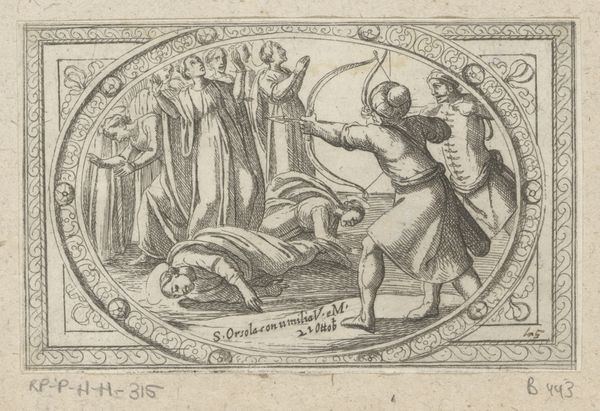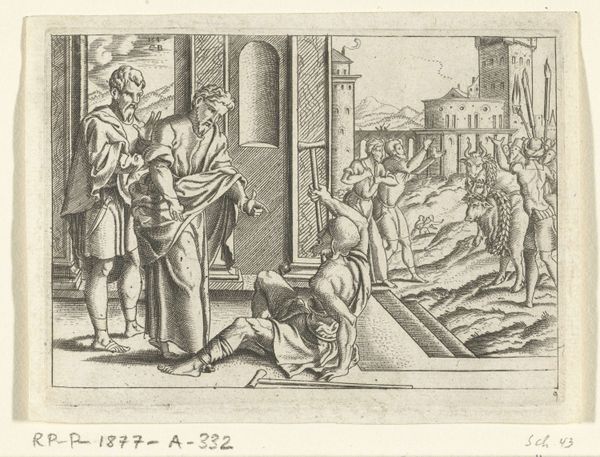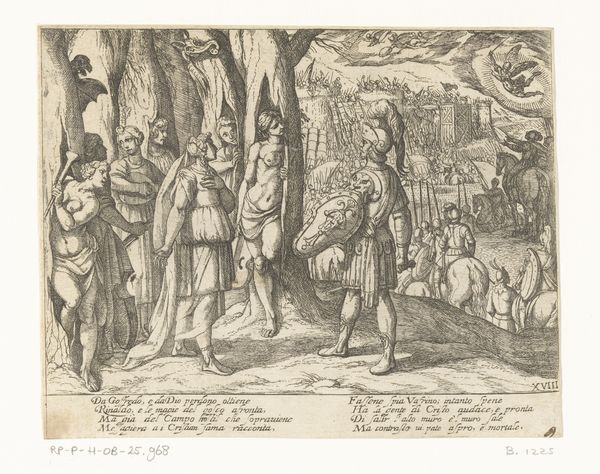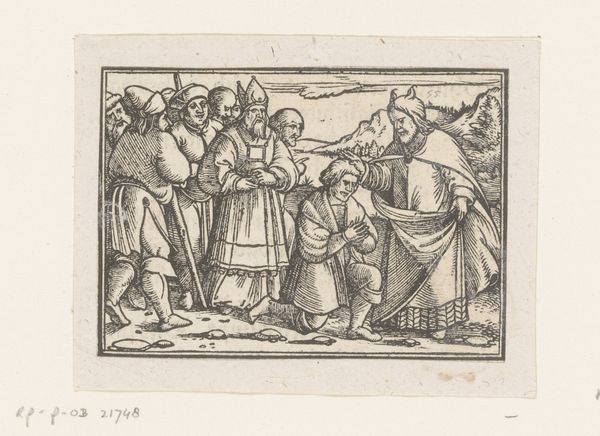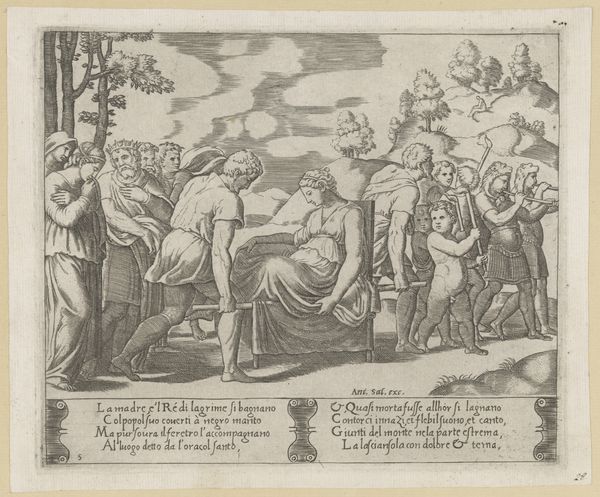
drawing, print, ink, engraving
#
drawing
#
baroque
# print
#
figuration
#
ink
#
history-painting
#
engraving
#
sword
Dimensions: height 73 mm, width 114 mm
Copyright: Rijks Museum: Open Domain
Editor: This is an engraving of "H. Catharina van Alexandrië" by Antonio Tempesta, dating from around 1565 to 1630. It's quite striking – a rather graphic depiction of execution, framed by these decorative flourishes. What catches your eye when you look at it? Curator: The immediate contrast between the gruesome central act and the ornamental border speaks volumes about the cultural context in which this print circulated. Prints like this often served a didactic purpose, disseminating moral or religious narratives widely, but simultaneously, the format itself participates in a visual culture that could commodify violence and suffering. Notice how the detached gaze of the executioner and the rather performative stances of the other figures seem staged for the viewer, the 'public' in a sense. Who was the intended audience, do you think? Editor: Possibly a wide audience if it was meant to disseminate moral stories, but the gruesome nature of it suggests that it might not be appropriate for the average home at the time. Curator: Precisely! The Baroque era was marked by intense religious fervor and equally intense political strife. Prints were propaganda tools. The dramatic, almost theatrical style amplified the message – likely a defense of Counter-Reformation ideals. Think about where this print might have been displayed – a monastery, perhaps, or even distributed among wealthy patrons reinforcing the authority of the Church. Consider also how history painting as a genre contributes to defining heroism within very particular socio-political agendas. Editor: So, it's less about individual artistic expression and more about the political and social functions it served? Curator: It's both, but inseparable! An artist makes choices within pre-existing constraints of power and patronage. Reflect on how prints such as this shaped perceptions of sainthood and martyrdom, functioning as vehicles for solidifying cultural ideologies and moral order. Editor: It’s amazing how one image can be read in so many complex ways when considering historical and political contexts! I would have viewed it very differently before this conversation. Curator: Indeed. Examining art this way unveils how even seemingly simple images operate within a larger web of social forces and public discourse.
Comments
No comments
Be the first to comment and join the conversation on the ultimate creative platform.
